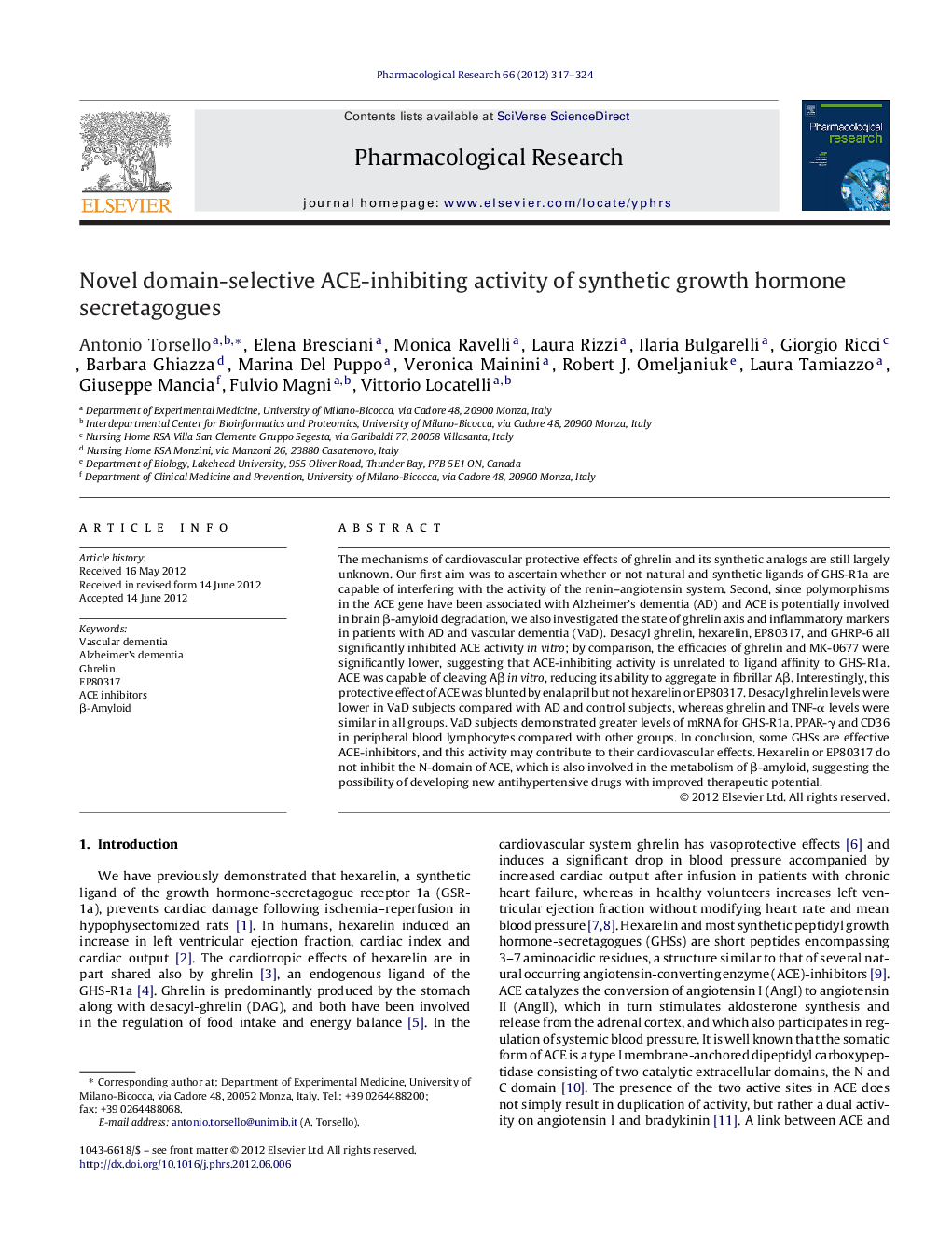| Article ID | Journal | Published Year | Pages | File Type |
|---|---|---|---|---|
| 2562065 | Pharmacological Research | 2012 | 8 Pages |
The mechanisms of cardiovascular protective effects of ghrelin and its synthetic analogs are still largely unknown. Our first aim was to ascertain whether or not natural and synthetic ligands of GHS-R1a are capable of interfering with the activity of the renin–angiotensin system. Second, since polymorphisms in the ACE gene have been associated with Alzheimer's dementia (AD) and ACE is potentially involved in brain β-amyloid degradation, we also investigated the state of ghrelin axis and inflammatory markers in patients with AD and vascular dementia (VaD). Desacyl ghrelin, hexarelin, EP80317, and GHRP-6 all significantly inhibited ACE activity in vitro; by comparison, the efficacies of ghrelin and MK-0677 were significantly lower, suggesting that ACE-inhibiting activity is unrelated to ligand affinity to GHS-R1a. ACE was capable of cleaving Aβ in vitro, reducing its ability to aggregate in fibrillar Aβ. Interestingly, this protective effect of ACE was blunted by enalapril but not hexarelin or EP80317. Desacyl ghrelin levels were lower in VaD subjects compared with AD and control subjects, whereas ghrelin and TNF-α levels were similar in all groups. VaD subjects demonstrated greater levels of mRNA for GHS-R1a, PPAR-γ and CD36 in peripheral blood lymphocytes compared with other groups. In conclusion, some GHSs are effective ACE-inhibitors, and this activity may contribute to their cardiovascular effects. Hexarelin or EP80317 do not inhibit the N-domain of ACE, which is also involved in the metabolism of β-amyloid, suggesting the possibility of developing new antihypertensive drugs with improved therapeutic potential.
Graphical abstractFigure optionsDownload full-size imageDownload high-quality image (84 K)Download as PowerPoint slide
